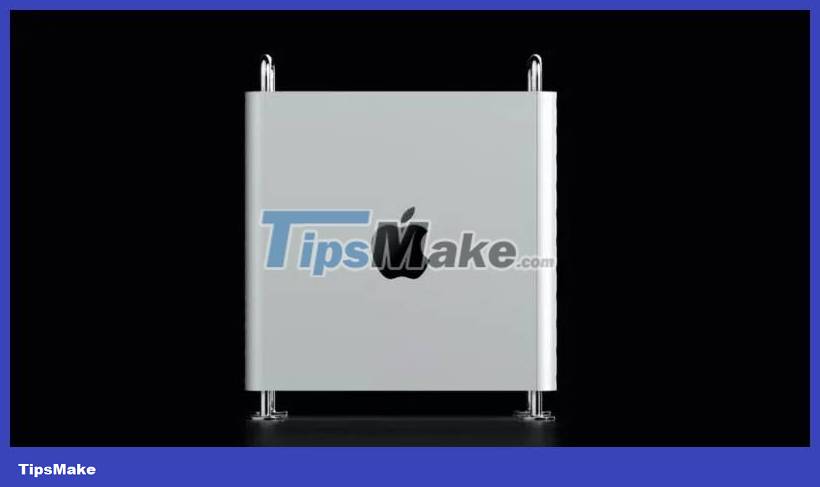6 notable differences between Mac Studio and Mac Pro
Apple's recent announcements at WWDC 2023 have got creative professionals extremely excited. Apple has unveiled two compelling desktops for creative professionals: the Mac Studio and the Mac Pro, both featuring Apple's most advanced silicon chips. This guide compares these two powerful desktops in detail to help you make the right decision for your needs.
Design and Portability
The design and portability of Mac Studio and Mac Pro are very different. While Mac Studio offers a more portable and space-saving design, the Mac Pro is more stationary. Mac Studio comes in two variants: M2 Max chip and M2 Ultra chip, weighing 2.7 and 3.6kg respectively.

The Mac Studio with the M2 Ultra has a more power-hungry chip and runs hotter, requiring a dense copper heatsink instead of the aluminum heatsink found in the M2 Max model. With a compact height of only 9.4cm, it is a relatively portable option. However, its compact form factor offers limited airflow, which can lead to heat-induced performance loss when performing performance-intensive workloads – no matter which model you choose.

On the other hand, the Mac Pro is not designed for portability. Weighing 16.9kg and measuring up to 52.8cm tall, it's designed to be fixed on a desk. If you need to move your Mac Pro around in your workspace, Apple offers optional wheels for an additional fee of $699. Note that both the Mac Studio and the Mac Pro retain the same design aesthetic from 2022 and 2019. Apple focused on upgrading the internal specifications, while keeping the outside appearance intact.
Efficiency
When it comes to performance, both Mac Studio and Mac Pro offer impressive capabilities – but there are some notable differences. The new Mac Studio supports configurations with the M2 Max or M2 Ultra chip, while the Mac Pro only comes with the M2 Ultra chip. The M2 Ultra chip is essentially two M2 Max chips combined, making the entry-level Mac Studio lower than the base Mac Pro.

Mac Studio, with its M2 Max chip, has a 12-core CPU and options for a 30-core or 38-core GPU. The M2 Ultra chip is consistent across both models, offering a 24-core CPU and options for a 60-core or 76-core GPU.
Apple promises that the M2 Max Mac Studio will render up to 50% faster than the M1 Max version, with 25% improved Xcode performance. It should be noted that the Mac Pro no longer supports afterburner cards because the M2 Ultra's hardware-accelerated H.264, HEVC, and ProRes video encoding and decoding engine now provides performance comparable to seven afterburner cards.
While the traditional scale of performance is achieved by connecting two chips through the motherboard, a proprietary Apple silicon interposer called 'UltraFusion' connects the chips without causing significant latency or bandwidth limitation between processors. Simply put, the M2 Ultra chip actually delivers twice as much power as the M2 Max chip without the bottleneck.
Both Macs can be equipped with up to 192GB of unified memory and an 8TB SSD. However, Mac Studio with the M2 Max chip supports up to 64GB of memory (or 96GB with a 38-core GPU configuration). The important factor to note is that both Mac desktops come with macOS Ventura, which provides excellent system memory management, thanks to features like 'memory swap'. Unlike Mac Studio, the Mac Pro also comes with essential peripherals, like a Magic Keyboard with Touch ID and a digital trackpad, as well as a Magic Mouse.
Ports and connections
While the Mac Studio and Mac Pro both support WiFi 6E and Bluetooth 5.3 connections, there are notable differences between both Macs in terms of I/O. All Mac Studio models have four Thunderbolt 4 ports, along with two USB-A ports, an HDMI 2.1 port, a 10Gb Ethernet port, and a 3.5mm headphone jack located on the rear.

All Mac Studio configurations also have two USB-C ports and an SDXC card slot on the front panel. Two USB-C ports located on the front panel of the M2 Max model provide data transfer speeds of up to 10Gb/s, while the M2 Max Ultra model has two USB-C ports on the front panel for data transfer speeds of up to 40Gb/s.
The Mac Pro addresses the lack of ports on the 2019 model by offering more powerful options. It includes eight Thunderbolt 4/USB-C ports (four more than the Mac Studio), with six on the back and two accessible from the top.
These Thunderbolt ports support the same technologies as Mac Studio and can connect up to 6 Pro Display XDRs simultaneously. While the Mac Pro offers the same high-impedance 3.5mm headphone jack as the Mac Studio, the Mac Pro features three USB-A ports, two HDMI 2.1 slots, and dual Ethernet ports.
While you get more port types with the Mac Pro, Mac Studio's selection is still quite flexible and should suit most users' needs. The choice will depend on your connection requirements and the number and type of devices you need to connect.
Price
The price difference between Mac Studio and Mac Pro is obvious, with the Mac Pro being the significantly more expensive option. While the base models of both computers have a significant price difference, the Mac Pro, Apple's flagship workstation, has a higher price tag. The Mac Pro's flexibility comes at the expense of PCIe expansion support.

The basic Mac Studio, powered by the M2 Max chip, starts at $2000, while the M2 Ultra version goes up to $4000. In contrast, the Mac Pro starts at $7000 and the stand version starts at $7500.
Both models offer different upgrade options, so you can customize your machine with features, such as a higher core count GPU (76 cores instead of 60), increased storage (SSD up to 8TB) and more unified memory (up to 192GB). However, these optional add-ons increase the price significantly, especially when choosing the top configuration.
At the most expensive, Mac Studio can go up to $9300, while Mac Pro can go up to $12,950. It's worth noting that both computers come pre-installed with software, such as Final Cut Pro, worth $300, and Logic Pro, worth $200. While Mac Studio is more reasonably priced, the Mac Pro has certain perks for professional users, with specific storage and network requirements.
Memory and storage
Storage plays an important role in the performance and functionality of any computer, including Mac Studio and Mac Pro. These machines offer a variety of SSD storage options to meet different storage needs. Both options offer up to 8TB of onboard storage (1TB, 2TB, 4TB, and 8TB), so you have plenty of space to store your data. The M2 Max version of Mac Studio also lets you choose a 512GB SSD option for an even lower price.
In terms of memory, both Macs support up to 192GB of RAM (including 64GB, 128GB, and 192GB variants). But Mac Studio also offers 32GB and 96GB variants, though both are limited to the M2 Max version (the 96GB variant also requires a 38-core GPU with the M2 Max). It's worth noting that the memory capacity of both Macs is not user-upgradable.
Possibility to upgrade
When it comes to upgradability, Mac Pro has the edge over Mac Studio. The Intel-based Mac Pro features Apple's Mac Pro Expansion (MPX) modules, allowing for easy upgrades with slot modules. However, the Apple silicon Mac Pro seems to have moved away from MPX modules, as it now uses its own GPU through a more streamlined SoC design.

The Mac Pro offers 6 full-length PCIe Gen 4 slots, including two x16 slots and four x8 slots. Additionally, there is a single half-length x4 PCIe Gen 3 slot used by Apple's I/O cards. While the removal of MPX modules may disappoint some users, the Mac Pro still offers compelling options for expansion and customization via the PCIe slots.
On the other hand, Mac Studio lacks the modular elements and, therefore, lacks true upgradability. Its design prioritizes portability over scalability, resulting in no PCIe slots for expansion. Once you've chosen a profile, you'll stick with it for the life of your Mac.
 Instructions to install Windows 10 on Macbook
Instructions to install Windows 10 on Macbook How to lock the MacBook keyboard for cleaning and repair
How to lock the MacBook keyboard for cleaning and repair How to batch rename files on Mac
How to batch rename files on Mac macOS 13 Ventura: New Features, Supported Devices, and Release Date
macOS 13 Ventura: New Features, Supported Devices, and Release Date Summary of ways to restart MacBook Air
Summary of ways to restart MacBook Air How to Restart MacBook Pro
How to Restart MacBook Pro